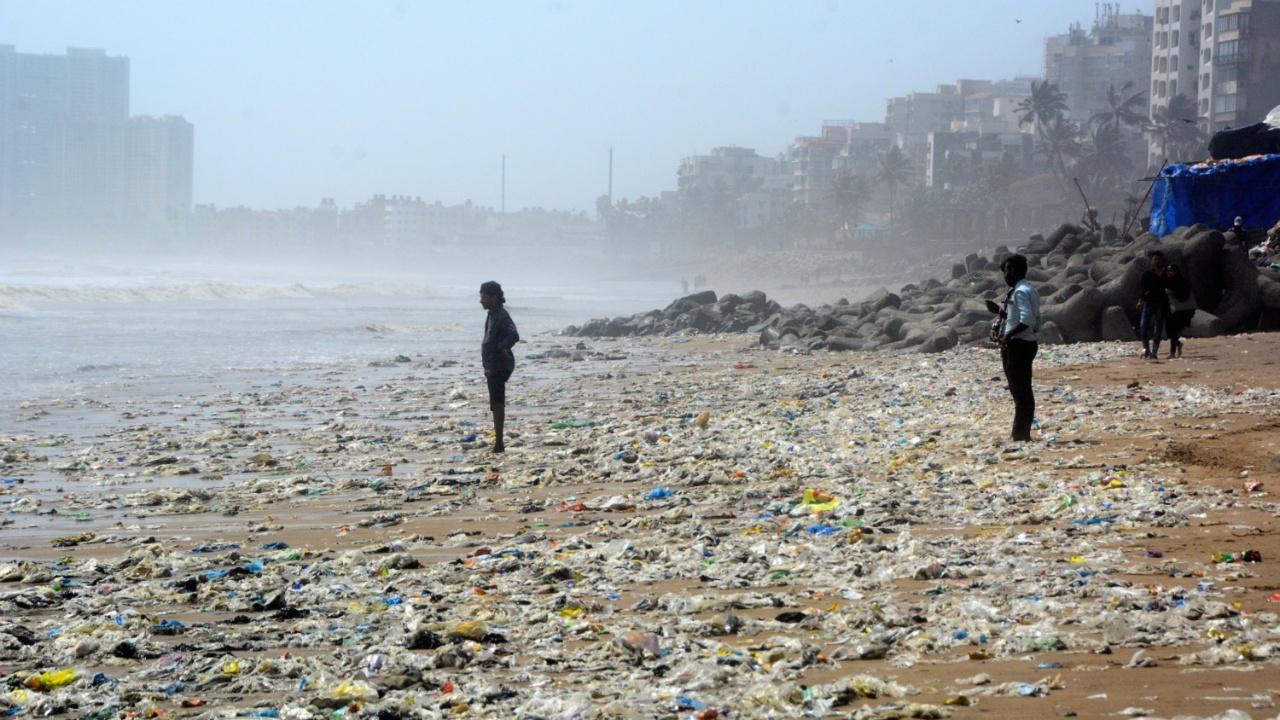
Microplastics, containing toxic pollutants and chemicals, are increasingly getting deposited in our human respiratory tract, and can pose serious health risks, warned a study. Researchers in 2022 showed that humans might inhale about 16.2 bits of microplastic every hour, which is equivalent to a credit card over an entire week. And these microplastics — tiny debris in the environment generated from the degradation of plastic products — usually contain toxic pollutants and chemicals.
To understand its effects, a team of Australian researchers developed a computational fluid dynamics model to analyse microplastic transport and deposition in the upper airway. They explored the movement of microplastics with different shapes (spherical, tetrahedral, and cylindrical) and sizes (1.6, 2.56, and 5.56 microns) and under slow and fast breathing conditions.
The findings, published in the journal Physics of Fluids, showed that microplastics tended to collect in hot spots in the nasal cavity and oropharynx, or back of the throat. “The complicated and highly asymmetric anatomical shape of the airway and complex flow behaviour in the nasal cavity and oropharynx causes the microplastics to deviate from the flow pathline and deposit in those areas,” said Mohammad S. Islam, from the University of technology, Sydney.
“The flow speed, particle inertia, and asymmetric anatomy influence the overall deposition and increase the deposition concentration in nasal cavities and the oropharynx area,” he added. Breathing conditions and microplastic size influenced the overall microplastic deposition rate in airways. An increased flow rate led to less deposition, and the largest (5.56 micron) microplastics were deposited in the airways more often than their smaller counterparts.
The authors believe their study highlights the real concern of exposure to and inhalation of microplastics, particularly in areas with high levels of plastic pollution or industrial activity. They hope the results can help inform targeted drug delivery devices and improve health risk assessment. “This study emphasises the need for greater awareness of the presence and potential health impacts of microplastics in the air we breathe,” said YuanTong Gu, from the Queensland University of Technology in Brisbane.
Also Read: Cyclone dumps tonnes of microplastic debris onto Versova beach, experts raise concerns
This story has been sourced from a third party syndicated feed, agencies. Mid-day accepts no responsibility or liability for its dependability, trustworthiness, reliability and data of the text. Mid-day management/mid-day.com reserves the sole right to alter, delete or remove (without notice) the content in its absolute discretion for any reason whatsoever
Stay connected with us on social media platform for instant update click here to join our Twitter, & Facebook
We are now on Telegram. Click here to join our channel (@TechiUpdate) and stay updated with the latest Technology headlines.
For all the latest Health & Fitness News Click Here
